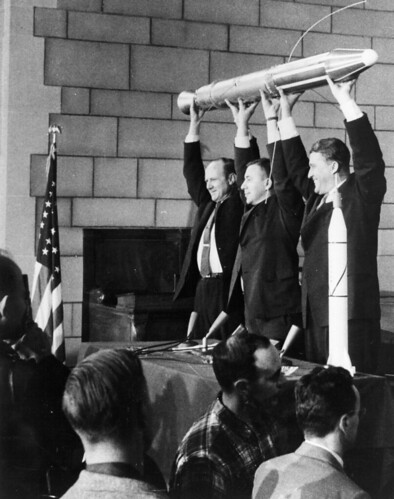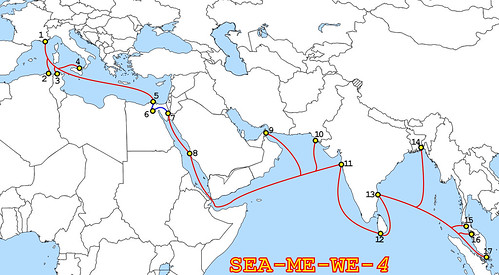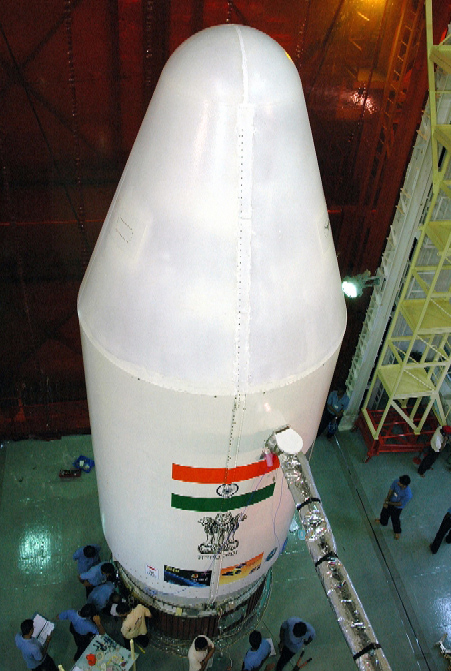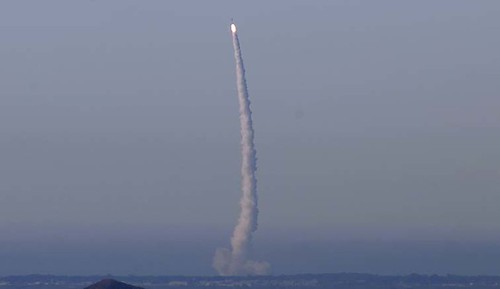SatelliteWiki.com Launches
Thursday, January 31st, 2008
Photo Caption: A model of Explorer 1, held by JPL’s Director William Pickering, scientist James Van Allen and rocket pioneer Wernher von Braun (from left to right). The team was gathered at a news conference at the National Academy of Sciences in Washington, D.C., to announce the satellite’s successful launch. America’s first satellite, Explorer 1 had launched a few hours before, on Jan. 31, 1958.
It may not be on par with the launch of Explorer 1, but SES Americom is proud to announce the launch of satellitewiki.com today:
Using the same style and software used to power Wikipedia, satellitewiki.com, satellitewiki.com lets visitors explore the history of man-made satellites, definitions of satellite terms and learn about how satellites impact a wide range of industries from oil and gas to television….
From the first U.S. satellite’s bleep in 1958 to modern satellites with their own neighborhoods, users exploring the wiki can find interesting facts, download imagery and discover how satellites work. With input from other users and readers, information can be updated, changed and added, as well.
Want to know the difference between ‘carrier frequency’ and “geostationary transfer orbit”? Or when the best time to look up in the night sky to see a satellite passing over your neighborhood? Log on at satellitewiki.com.
Although SES AMERICOM has funded the creation of satellitewiki.com, the site is open to the public to add and edit content in true wiki fashion. SES AMERICOM invites all players in the satellite industry to visit satellitewiki.com and add their content so that the website can grow into an important resource for anyone interested in the satellite industry. SES AMERICOM and U.S. satellite historical timeline
As BusinessWeek reported last spring, many corporate wikis are going viral. Both Nokia and investment bank Dresdner Kleinwort, for example, have successfully used wikis to collaborate on solving specific product-design problems and as alternatives to e-mail and collaborative software.
Wikis are also becoming interfaces for B-to-B marketing. IBM is exploring opening up its wikis to explain new products to potential customers, while Hewlett-Packard has used wikis as a focal point for their "The Computer is Personal Again" marketing campaign:
In the first two weeks after the campaign broke in late August, more than 220,000 visitors clicked through to a microsite for small and midsize businesses, and the HP Community wiki recorded more than 1,400 visitors. Other Web-based printing activities are being added, and the marketing campaign will continue to evolve, based on the feedback HP receives from customers via the wiki.
The current initiative isn’t just an advertising tactic but a marketing strategy designed to reinforce the brand’s relevance in a changing world.
In marketing, how many people wikis reach may be less important than who is reached. As Ross Mayfield puts it, "It’s no longer about impressions you make but who you impress."
But wikis, once they hit a critical mass, can be just plain fun. Equotes, for example, has some good quotes from all sorts of luminaries, including Neil Armstrong. There’s a SpaceWiki for astronomy buffs. And feel free to add your own insights and knowledge of the satcom industry at our new satellitewiki.com.
Or, you can start your own free wiki here.














